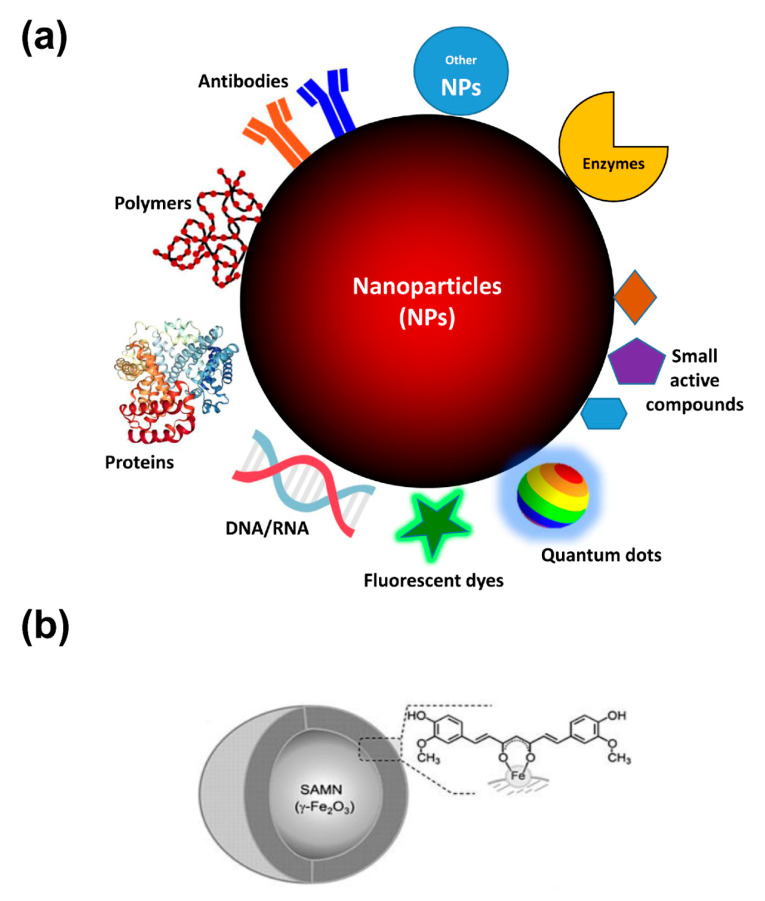Figure 2.
Nanoparticles at a glance. (a) Schematic illustration of NPs features for anti-cancer activity. As reported in the text, NPs coating strategies (e.g., by polymers surface decoration) improve biocompatibility and diminish the uptake by reticuloendothelial system. Moreover, functionalization with antibodies and proteins can empower the specific targeting to tumor tissues of chemotherapeutics, biotherapeutics (e.g., enzymes/peptides/gene delivery/siRNA), and optical properties (fluorescent dyes, photosensitizing agents) of the as-obtained nano-conjugates. Finally, the formation of nanohybrids with other nanomaterials can enlarge the possible applications of single nanomaterials. (b) Chemical entities exposing chelating moieties, such as catechols, keto-enols, phosphate or carboxyl groups, can interact and being bound onto “surface active maghemite nanoparticles” (SAMNs) surface due to dangling bonds of iron(III) sites which can be compared to free Fe3+ ions. As an example, the poor bioavailability and rapid degradation in aqueous conditions of curcumin, a well-known natural compound that has raised an intense debate about its preventive anti-cancer activity, can be overcome by its facile conjugation on the surface of SAMNs (Adapted with permission from [112]. Published by Wiley, 2014).

